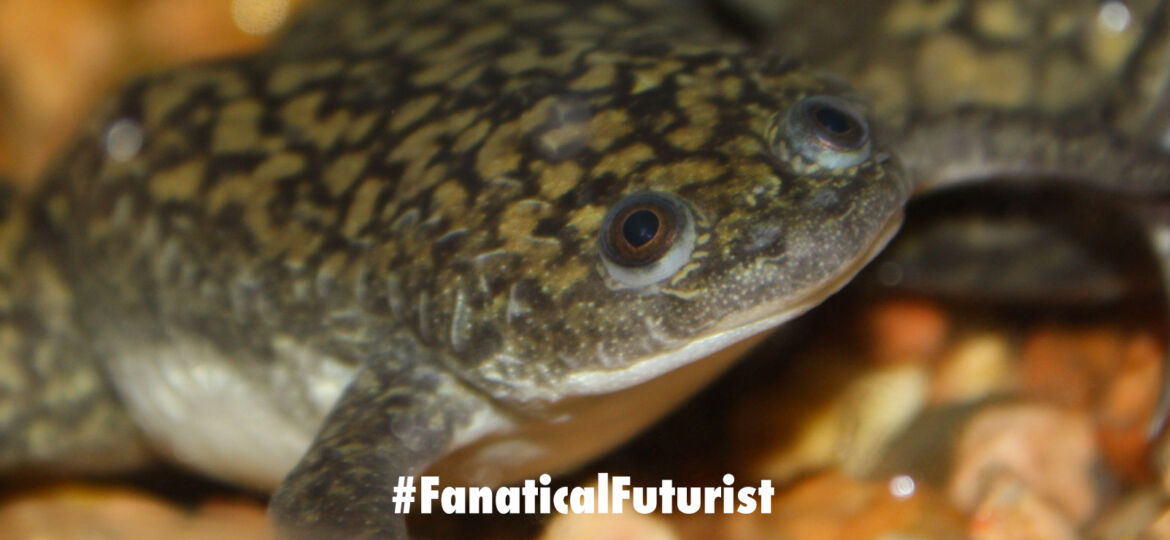
WHY THIS MATTERS IN BRIEF
Some of us are unfortunate enough to loose a limb, or multiple limbs, and one day this technology, and technologies like it, could help us regrow them.
Like something, out of a science fiction movie or everyone’s favourite “Merc with a mouth”, Deadpool, researchers at Tufts University in the US may have discovered a way to regrow human amputated limbs. Furthermore though their breakthrough means we may one day be able to re-grow lost limbs using little more than a silk bandage and some very, very fancy science. Yes, you heard that right. As you probably already know, there are countless animals in the animal kingdom, that have no problem re-growing various body parts after they’ve been injured or severed.
Creatures like spiders, starfish, lizards, flatworms, and sea cucumbers can regrow body parts at will, and as humans, let’s face it we’re crazy envious. Nevertheless though there are only a few mammals that actually have this superpower, and humans aren’t one of them – yet – even though we’re working on it under the auspices of bioelectronic and regenerative medicine.
Like loosing change down the back of the sofa, somewhere along the long evolutionary road we stupid mammals lost our ability to regrow our body parts. But with the right hormone and chemical cocktail scientists may have just managed to resurrect the process.

Results with control, and the new bioreactor treatment
The horrendous event of losing a limb is also far more common than you might think and its numbers are growing across the globe. Just in the US alone for example there are 2.1 million people living with the loss of a limb or limbs.
According to the Tufts researchers there’s a unique species of African frog that has weak regenerating abilities, and this was the subject of the their work. When the frog is injured, the amphibian grows a thin spike, shaped piece of cartilage, and using a hormone called progesterone, and Tuft University’s Michael Levin and his research team were able to take that same frog and regrow a larger, footless, paddle-like structure that hosted bones, nerves and blood vessels.
“We looked at progesterone because it showed promise for promoting nerve repair and regeneration,” said Celia Herrera-Rincon, a post-doctoral fellow at Tufts and lead author of the study. “It also modulates the immune response to promote healing, and triggers the re-growth of blood vessels and bone.
“Progesterone can also regulate the bioelectric state of cells, caused by cells passing ions across their outer membranes, which is known to drive regeneration and body pattern formation,” she added.
To regrow the limb the researchers used a small box, a bioreactor, whose bigger cousins are now also being used to grow meat, like chicken, duck, steak, and turkey, without the animals, containing a progesterone loaded gel that was sewn over the wound immediately after amputation.
The wearable bioreactor, which could also one day be 3D printed for the perfect fit, contained a silk protein-based hydrogel that was applied directly to the wound and was capable of delivering small molecule compounds to the affected site, and after 24 hours the process of tissue regrowth began quickly, lasting 9 months compared to the other amphibian test subjects who grew the normal spikes.
Also by adding more “complex cocktails” to new tests, the team discovered that their process created even better limbs that include partial toes, and using this as a foundation, Levin and his team believe if they discover the right “scaled-up bioreactor” it could one day be applied to humans.
“Now we’ll be using the bioreactor model as a new platform for finding ‘master regulator’ control points in the frogs, activated by drugs which, after a very brief treatment, trigger a long programme of tissue growth and remodelling – as well as other factors that support the entire process of regeneration,” Levin said, before adding, “The fact that the model applies treatments locally, which can also be varied over time and location on the wound, makes this a powerful tool for discovering regeneration therapeutics that we could one day hopefully apply to humans.”
It seems that Deadpool is ahead of his time, but one day who knows, all of us might have his superpowers, even if we don’t have his all too colourful language… And if you, like many, are against animal testing of any kind then there’s hope on the horizon there too with the announcement of new “labs on chips” products that I’ve written about at length previously.
Source: Cell Reports
















